This week’s graphs illustrate the sources of funding of United Nations (UN) Women.
Background
UN Women is an agency within the UN “dedicated to gender equality and the empowerment of women.” UN Women was created in 2011 after the merger of four agencies within the UN that were dedicated to women’s equality: the Division for the Advancement of Women, the International Training and Research Institute for the Advancement of Women, the Office of the Special Advisor on Gender Issues and Advancement of Women, and the UN Development Fund for Women. The purpose of the merger was to combine resources, mandates, and expertise to “fuel faster momentum toward women’s empowerment.”
Since 2011, UN Women has relied on funding from four general sources:
1. Member states are the countries that make up the UN. Contributions from member states are funds the country’s governments (i.e., taxpayers) send to UN Women. Contribution amounts range widely between states, and not all states contribute to UN Women.
2. Private companies and non-governmental organizations (NGO) also contribute financially to UN Women. Examples private companies include BHP, Coca Cola, and Facebook. Examples NGOs include the Ford Foundation and the Bill and Melinda Gates Foundation.
3. UN Women National Committees are “independent local non-profit, non-governmental organizations that support the mission of UN Women by raising funds from the private sector, promoting women’s rights, and securing worldwide visibility for women and girls. National Committees are legal entities separate from UN Women, the United Nations and any other subsidiary body of the United Nations.”
Currently, there are 13 National Committees: Australia, Austria, Finland, France, Germany, Iceland, Italy, Japan, Netherlands, New Zealand, Spain, Sweden, and the United Kingdom. The United States is not currently listed as having a National Committee, but annual reports from UN Women show that the United States and other countries (e.g., Singapore, Switzerland) have had National Committees in the past.
4. Other UN agencies, programs, and funds also provide financial support to UN Women. Contribution amounts range widely between agencies. Examples of other UN agencies include the World Health Organization (WHO), UN International Children’s Emergency Fund (UNICEF), and United Nations Educational, Scientific and Cultural Organization (UNESCO).
Aim
In the current post, I detail the funding from these four sources. The relevant data were extracted from annual reports published online by UN Women (see an example report here). I also describe the sex of the employees at the organization.
(See bonus commentary at the end of the post.)
Sex of Employees at UN Women
• The graph below displays the number of men and women employed at UN Women (in 2023).
• Each branch of UN Women – headquarters, regional offices, and country offices – employees more women than men.
• Across all offices at UN Women, there are 935 female employees and 308 male employees, amounting to a female representation of 75%.
Total Financial Contributions to UN Women
• The first graph below shows annual financial contributions to UN Women from 2011 to 2023 (in millions of USD). The total contribution over this 13-year period plotted on the right side of the graph (in billions of USD).
• Total financial contributions to UN Women increased from 2011 to 2020 and have since plateaued at around $540M per year.
• Between 2011 to 2023, UN Women received $5.3B in financial contributions from all sources.
• The second graph shows the proportional contributions to UN Women from the four broad funding sources. Most funds (80%) have come from member states, followed by other UN agencies (15%), private and NGO contributions (4%), and national committees (1%).
Country Contributions to UN Women
• The graphs below show member states whose governments have made the largest total financial contributions to UN Women between 2011 and 2023.
• The first graph presents this information in millions of dollars. The second graph illustrates each country’s relative contribution (%) to the total $4.2B delivered to UN Women from members states over this 13-year period. The additional graphs show annual contributions from select countries.
• Sweden has been the largest contributor ($577M, 13.5%). The United Kingdom ranks 4th ($264M, 6.2%), Australia ranks 7th ($244M, 5.7%), United States 9th ($205M, 4.8%), and Canada 10th ($199M, 4.5%).
Private and NGO Contributions to UN Women
• The first graph illustrates the total financial contributions (in millions of dollars) made by select private groups and NGOs to UN Women between 2011 and 2023.
• The second graph illustrates each private group’s and NGO’s relative contribution (%) to the total $225M delivered to UN Women from private groups and NGOs over this 13-year period.
• The top five private and NGO contributors to UN Women were the Bill and Melinda Gates Foundation ($41.2M, 18.4%), BHP ($28.0M, 12.5%), Ford Foundation ($6.5M, 2.9%), International Olympic Committee ($4.7M, 2.0%), and Coca Cola ($4.6M, 2.0%).
• Examples of other businesses or organizations that have made one or more contributions to UN Women over this 13-year period include Mary Kay Inc., Rockefeller Foundation, Mastercard, LinkedIn, Microsoft, Calvin Klein, Avon, Netflix, Google, Facebook, Twitter, and Nicole Kidman.
National Committee Contributions to UN Women
• The first graph illustrates the total financial contributions (in millions of dollars) made by national committees to UN Women between 2011 and 2023.
• The second graph illustrates each committee’s relative contribution (%) to the total $52M delivered to UN Women from private groups and NGOs over this 13-year period.
• The national committees that contributed the most funds to UN Women over this period were the United States ($14.6M, 28.4%), Iceland ($9.1M, 17.8%), Australia ($7.5M, 14.7%), Finland ($5.4M, 10.6%), and United Kingdom ($4.6M, 9.0%).
UN Agency Contributions to UN Women
• The first graph illustrates the total financial contributions (in millions of dollars) made by UN agencies to UN Women between 2011 and 2023.
• The second graph illustrates each agency’s relative contribution (%) to the total $783M delivered to UN Women from private groups and NGOs over this 13-year period.
• The agencies that contributed the most funds to UN Women over this period were the Multi-Partner Trust ($341.4M, 43%), United Nations ($86.7M, 11%), UN Development Program ($78.7M, 10%), the Peacebuilding Fund ($47.9M, 6%), and UN AIDS ($31.7M, 4%).
Bonus Commentary
To recap, UN Women, an organization comprised of 75% female staff, received approximately $5.3B in financial contributions between 2011 and 2023, with annual contributions averaging around $550M in recent years. About 80% of this funding comes directly from UN members states. However, additional funding from member states to UN Women occurs indirectly when other UN agencies transfer funds to UN Women. Putting aside these additional contributions, Sweden is the member state that makes the largest contributors to UN Women (~$50M per year). Other Nordic countries, the United States, United Kingdom, Canada, and Australia also make large financial contributions to UN Women each year.
UN Women also receives contributions from UN Women National Committees (1%) and private donors and NGOs (4%). The largest private and NGO donors are the Bill and Melinda Gates Foundation, BHP, Coca Cola, Ford Foundation, and the International Olympic Committee. The National Committees that have generated the most funds for UN Women since 2011 include the United States, Iceland, and Australia.
Detailing this funding history of UN Women is important because the organization is largely financed by taxpayers in member states. Because it is taxpayer-supported, UN Women should operate in a politically neutral and evidence-based manner. Yet, UN Women continually fails to operate at a high ethical and intellectual standard. The organization is politically and gender biased. These biases stem from UN Women’s affinity for intersectional feminism – a philosophy that guides the organization and is referenced regularly in their social media posts, blogs, and guiding documents such as the “Intersectional Resource Guide and Toolkit” and “Feminist Climate Justice.”
Because UN Women is grounded in intersectional feminism, the organization necessarily takes an a priori view about the lives of boys and men that makes empathy for males impossible. Reports by UN Women, such as “Transforming Patriarchal Masculinities: Learning From Practice,” express little concern for issues facing boys and men. Instead, such works seek to “transform” men and use them as allies to achieve better life outcomes for girls and women.
One solution to correcting UN Women’s bias is member states requiring that half of their contributions go toward creating and operating a new UN agency that specifically addresses boys’ and men’s issues from a non-feminist perspective. A better solution is to cease financial contributions to UN Women altogether and return the money to taxpayers who can choose to do what they want with their money, including donating it to a women’s organization, a men’s organization, or The Nuzzo Letter.
Related Content at The Nuzzo Letter
SUPPORT THE NUZZO LETTER
If you appreciated this content, please consider supporting The Nuzzo Letter with a one-time or recurring donation. Your support is greatly appreciated. It helps me to continue to work on independent research projects and fight for my evidence-based discourse. To donate, click the DonorBox logo. In two simple steps, you can donate using ApplePay, PayPal, or another service. Thank you!












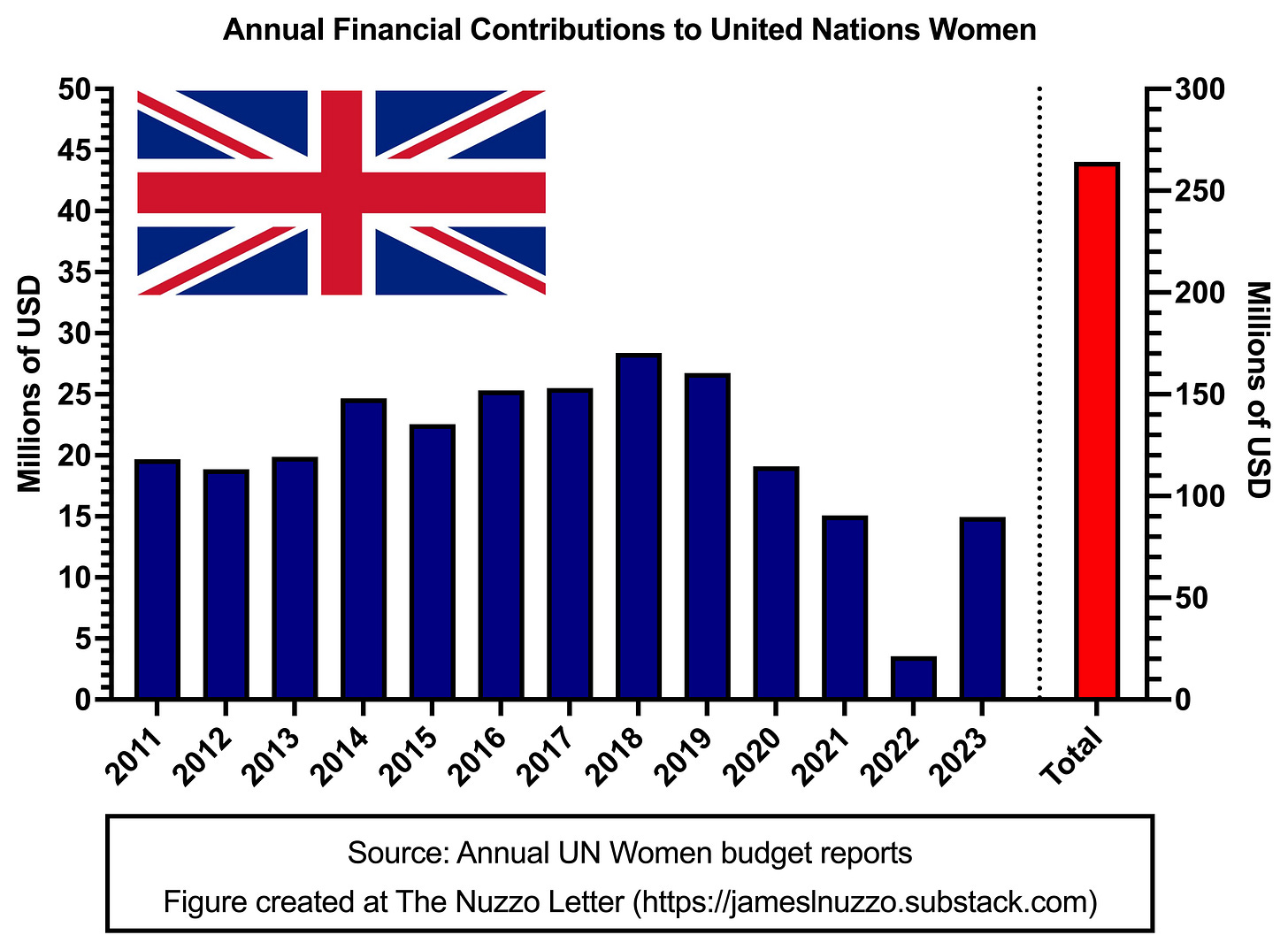

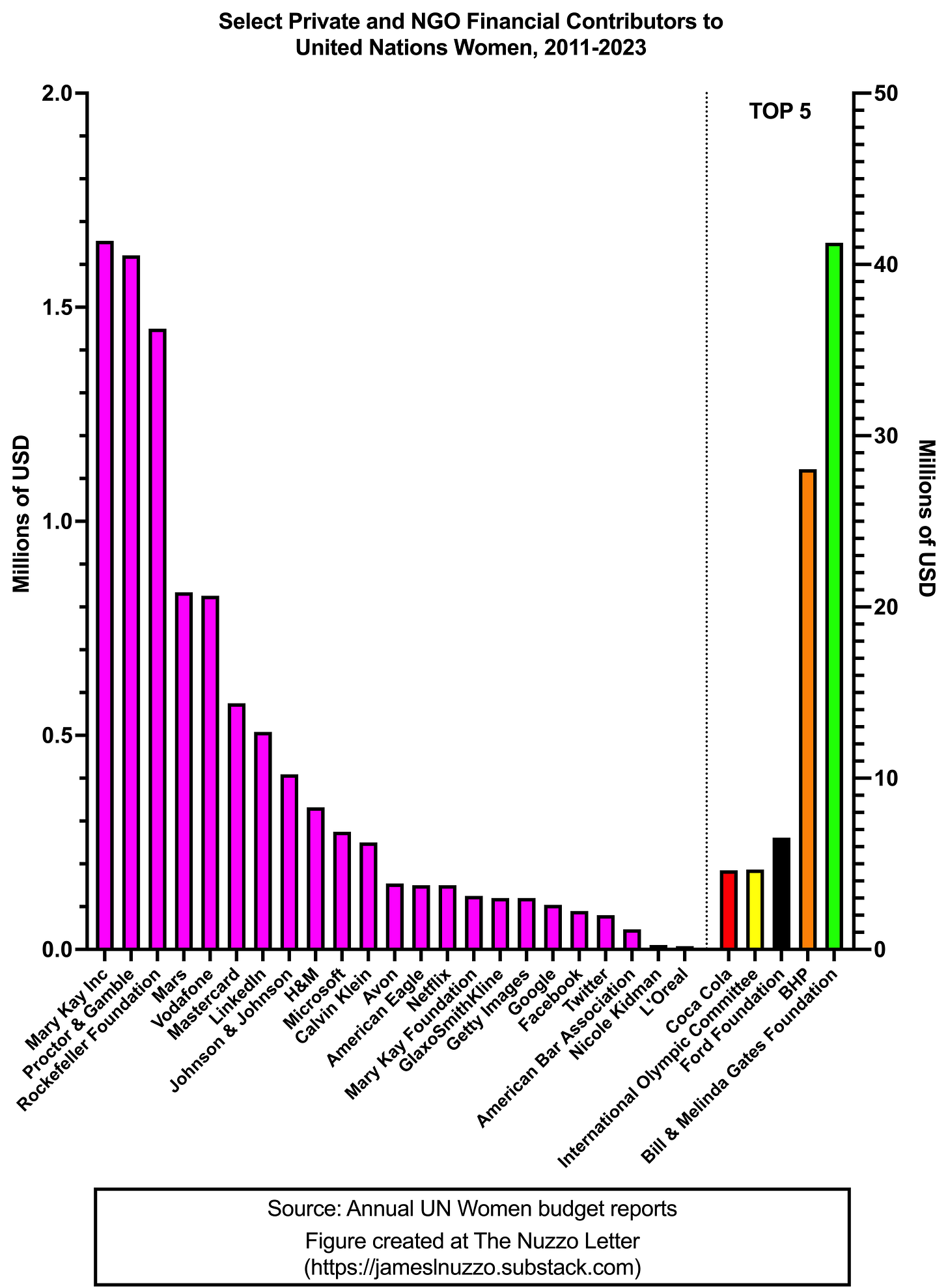
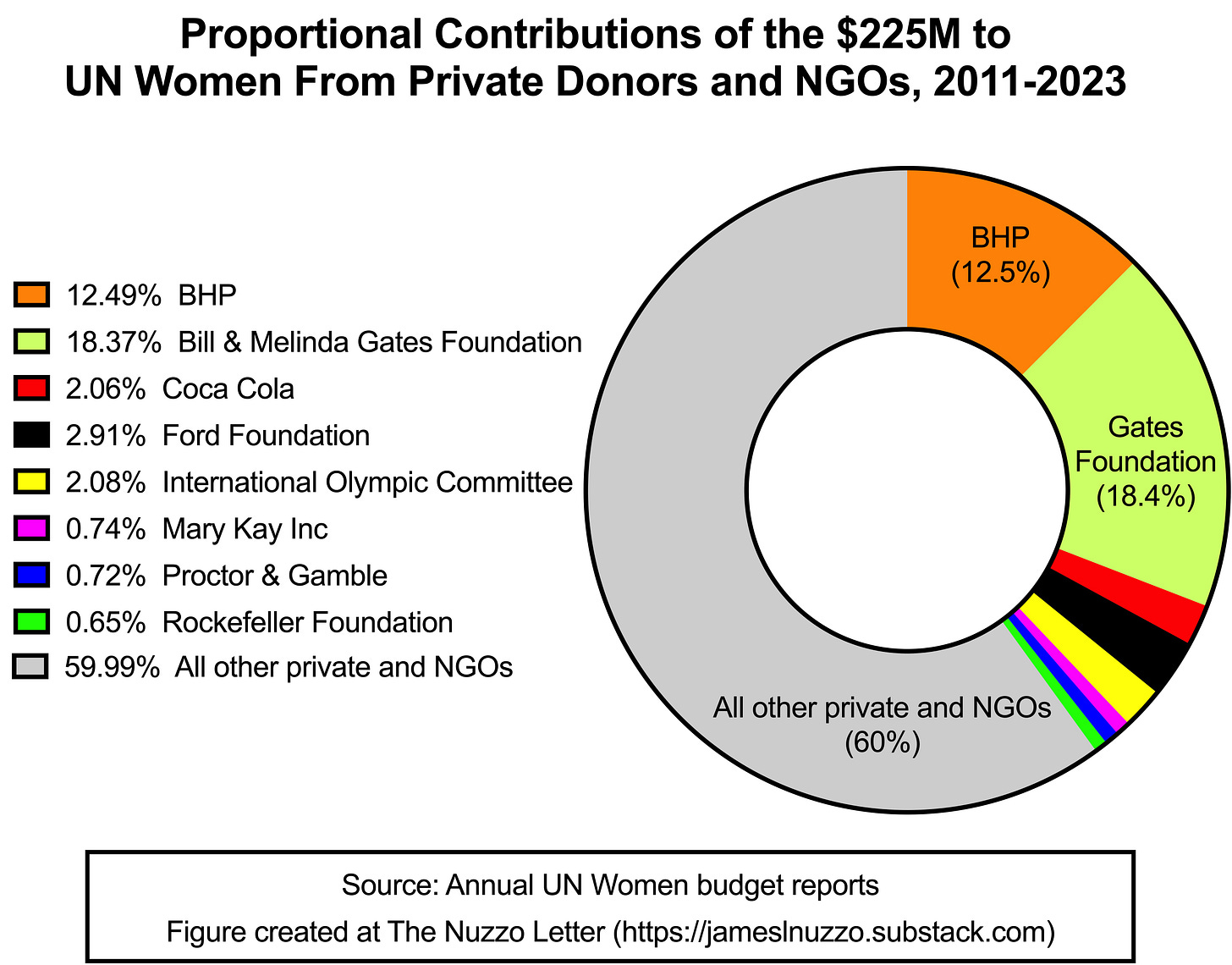

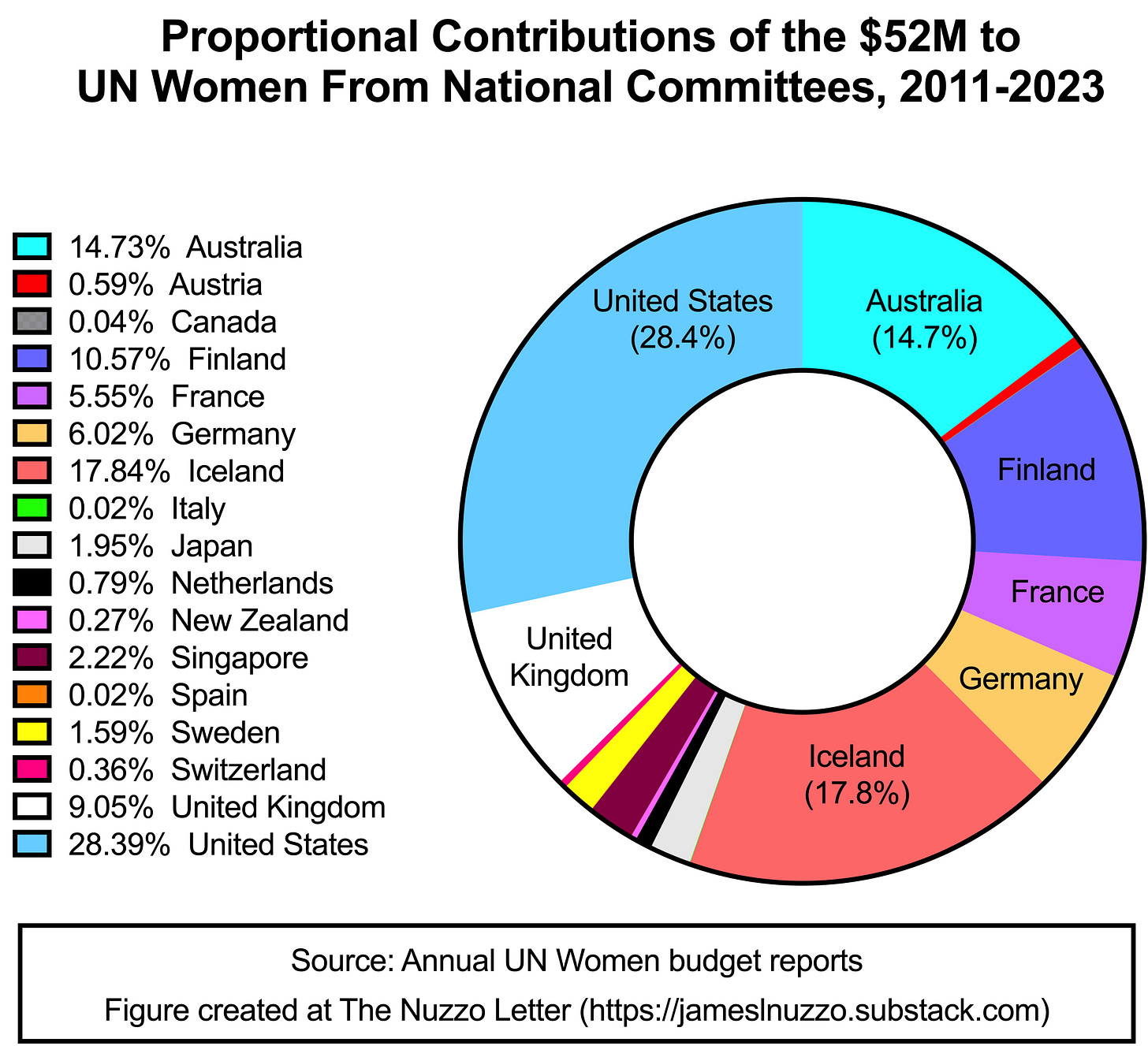
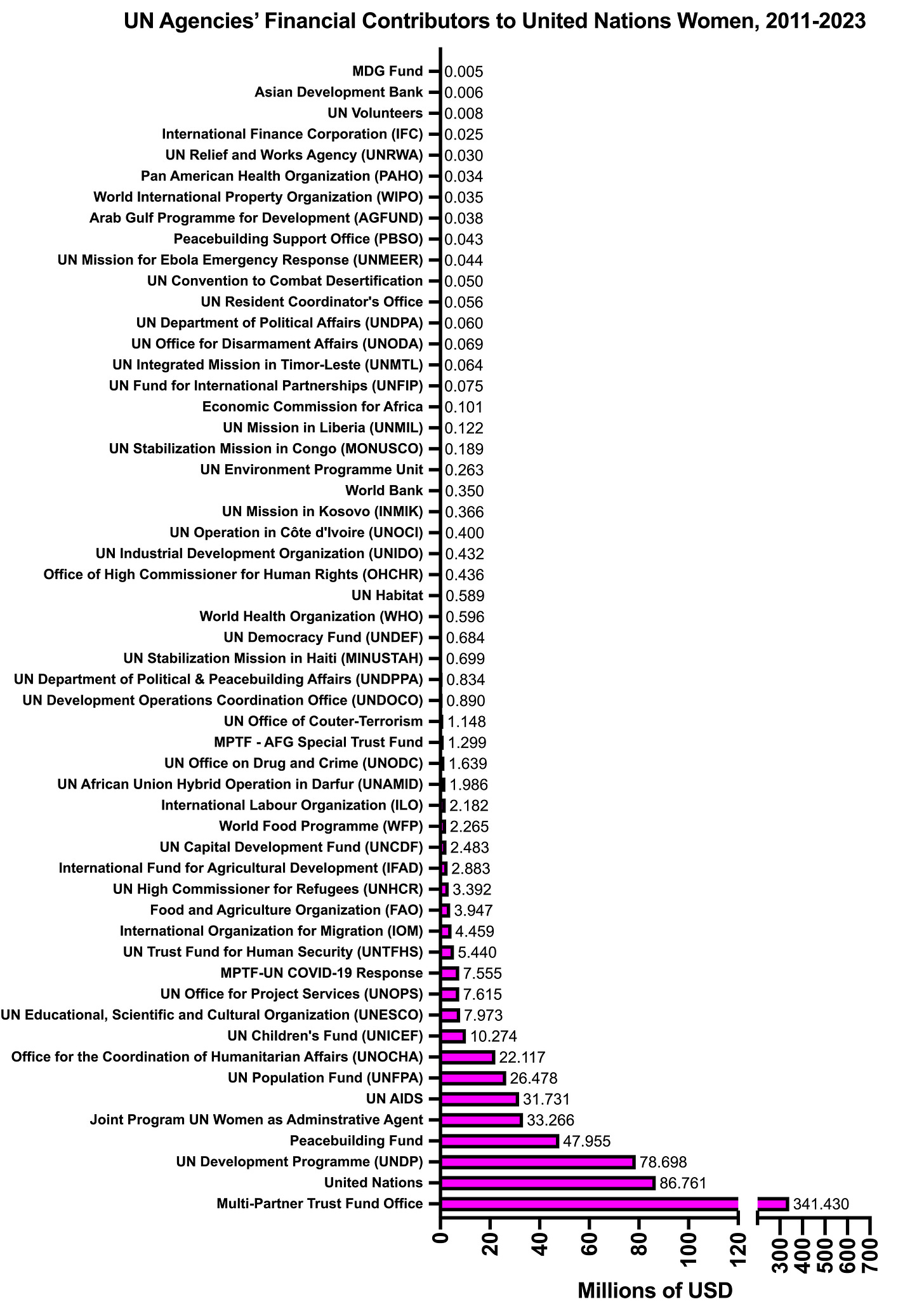
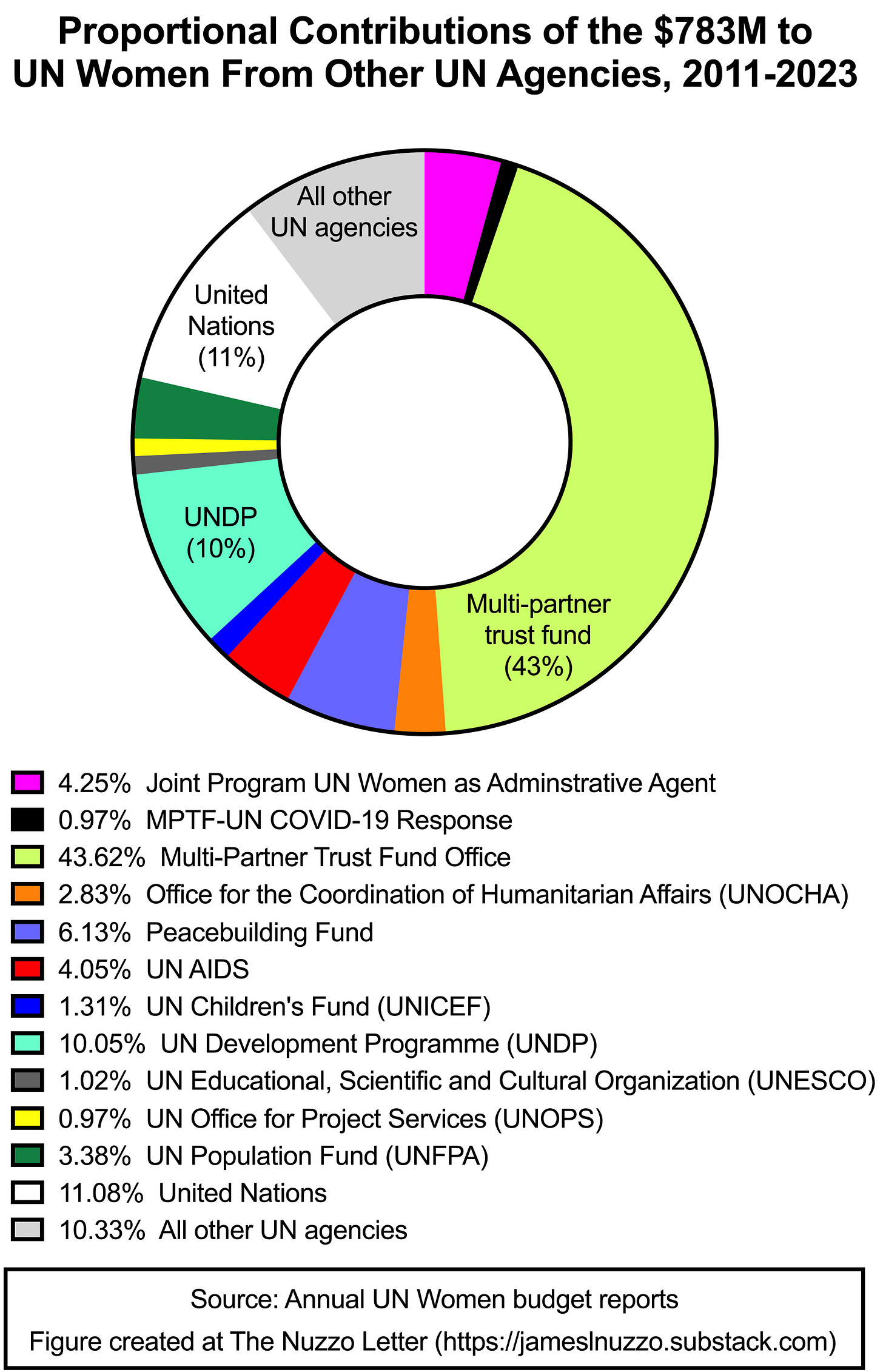

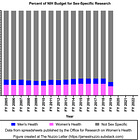
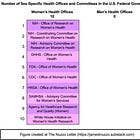

Damn. They get a lot of money. It's hard to imagine the sorts of things we could do for men with even 1/10th of that.
The feminists funding is way bigger than I could have imagined.
No wonder they are so strong and persistent.
Men need to organize and stop this nonsense.
I'll write my country and ask why there is no equal money spend on male stuff.